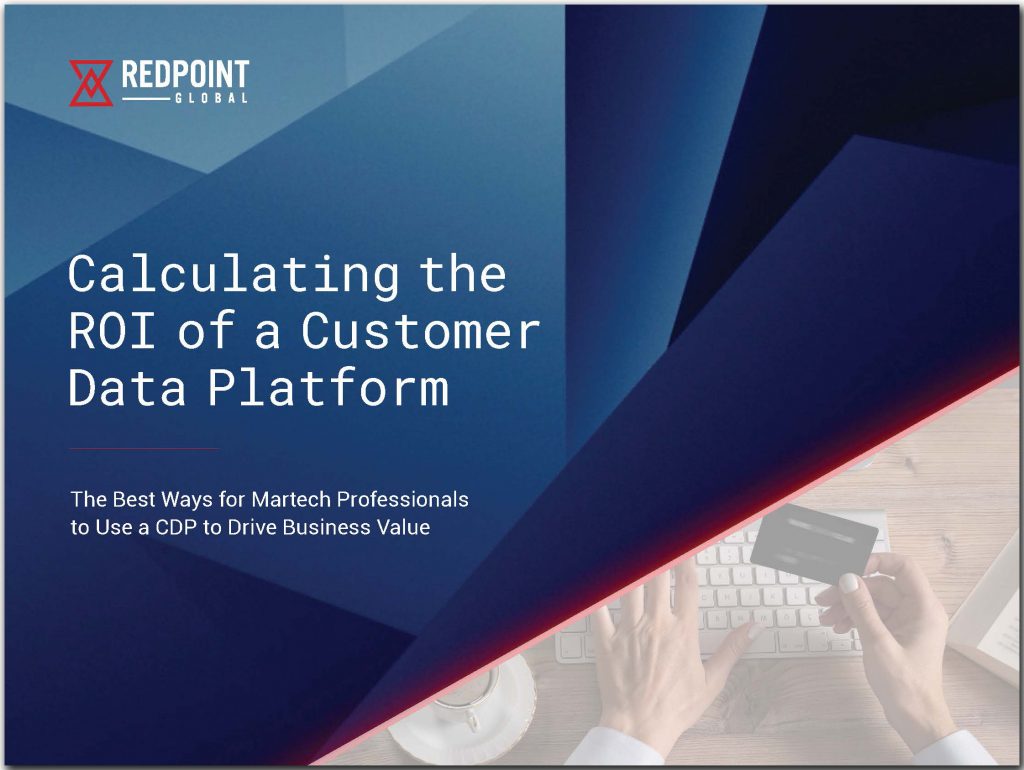 Consumer expectations for a personalized customer experience are having a profound effect on marketing operations. Traditionally, marketers focused on creating customer engagement in support of products and services offered, or in support of other business functions or channel leaders. The model served its purpose well and worked for a long time.
Consumer expectations for a personalized customer experience are having a profound effect on marketing operations. Traditionally, marketers focused on creating customer engagement in support of products and services offered, or in support of other business functions or channel leaders. The model served its purpose well and worked for a long time.
A product-based marketing program, though, is no match for today’s empowered consumer in control of an omnichannel customer journey with many possible touchpoints – web, in-store, call center, mobile app, and IoT-connected devices, to name a few. Consumers expect the brands they interact with to know how and where the consumer engages, and for the customer experience to be in the right context and cadence of their individual journey. The product itself has largely become commoditized. A study from Frost & Sullivan shows that by next year customer experience will overtake price and product as a competitive differentiator.
Differentiating on customer experience requires marketers to break free from the product-based marketing mentality. A big picture view requires a shift from marketing as a support function to now being a mission-critical line of business and revenue-generating engine. Consumers will reward hyper-personalized customer experiences with wallet share. According to research by Marketing Insider Group, 78 percent of consumers say that a personally relevant customer experience ups their purchase intent.
To deliver a differentiated customer experience, marketers must take the lead in breaking through the data and departmental siloes. Organizational buy-in is a must; business functions and channel leaders must recognize that data fragmentation prevents marketing from accomplishing the primary objective of creating personalized customer experiences in an omnichannel environment.
A Customer-Driven Evolution
The empowered consumer is behind the need for marketing to take a lead role in orchestrating a seamless customer experience. Unprecedented choice, access, and convenience have put consumers in charge of their relationships with a brand, leading them to demand personalized customer experiences that at the same time respect their needs for privacy.
A recent Harris Poll commissioned by Redpoint, “Addressing the Gaps in Customer Experience” revealed that 73 percent of consumers surveyed said that brands are not meeting their expectations for a personalized, omnichannel customer experience. Brands surprisingly feel differently – with 89 percent saying they’re doing “somewhat to very well” with meeting those expectations.
One reason for the disparity is brands’ strategy for delivering a personalized CX fails to match up with execution. Siloed data, disparate marketing technologies, and a lack of a cross-functional alignment with the strategy all prevent marketing from giving consumers the personalized experience they expect.
Meeting these expectations requires marketing to take the reins in thinking across departmental siloes to create a seamless experience. With the aim to create a relevant, hyper-personalized omnichannel experience in real-time through web, sales, service, call centers, IoT devices, and all other touchpoints comes an appreciation for an all-hands, marketing-led approach.
Breaking through customer data siloes is the key to generating revenue as it is the basis for the hyper-personalized, omnichannel experiences that move the needle.
With organizational buy-in that marketing must take a revenue-generating perspective, the next obstacle is on the technology side. Purpose-built engagement systems that connect the last mile to the consumer (and serve a stand-alone function such as email or direct mail) may excel in a narrow scope, but without an integrated martech stack, it’s impossible for these systems to deliver engagement in the context and cadence of an omnichannel customer experience.
A customer data platform (CDP) provides an always updating, single view of the customer that is accessible in real-time across all these channels and touchpoints. The platform, which combines first-party, second-party, and third-party data from every source and data type, structured, semi-structured, and unstructured, is the first and most important step to break down the data siloes that have traditionally prevented marketing from formulating cross-channel engagement strategies. A CDP empowers marketers to orchestrate an engagement strategy across departments and systems, and across all anonymous to known journey stages for individual consumers.
A Single Point of Operational Control
Possessing a single view of the customer through data is one of three foundational pillars that give marketers a single point of operational control over data, decisions, and interactions that is the key to monetizing data with a differentiated customer experience.
Turning data into revenue requires more than having a single view; it requires making decisions about what to do with the data and then activating those decisions in the right channel and in the right context and cadence of a customer journey. A customer engagement hub (CEH) gives marketers a single point of control with a real-time decisioning engine and an orchestration layer that deliver personalized engagements across all customer touchpoints.
One hurdle for companies which are vying to monetize data into revenue is that the many investments they’ve made in their existing martech stack prevent them from creating a robust single customer view. There is a concern that generating a single point of operational control to differentiate on customer experience will require replacing their existing martech stack.
The Harris poll survey validates the concern that existing fragmentation poses a serious obstacle to personalization. Of marketing organizations with 10 or more customer engagement systems, 76 percent say that the number of systems make it hard for them to provide a seamless customer experience, with a majority also claiming that their systems have made it increasingly difficult to manage customer touchpoints and harder to effectively engage with customers (74 percent and 65 percent, respectively).
An open garden approach alleviates the concern by providing a single point of operational control over data, decisions, and interactions without having to re-platform any of the underlying touchpoints or data sources. An open garden approach frees marketers from being hemmed in by a fragmented martech ecosystem or limited by a walled garden marketing cloud data model that requires constant updates and cannot keep pace with an omnichannel consumer.
An open garden approach solves what marketers in the Harris Poll survey claim are the three biggest obstacles to delivering an omnichannel customer experience: costly and labor-intensive integrations, a lack of data integration between martech systems, and channels lagging the customer cadence. Across the board, nearly 30 percent (29, 28, and 27, respectively) of marketers chalked those reasons up as the biggest barriers.
By removing these obstacles, marketing can begin to take its rightful place as the tip of the spear for the enterprise as a revenue generator. Given the right support and tools, marketing can truly differentiate on customer experience and drive continuous innovation with a seamless omnichannel experience that customers reward with loyalty and wallet share.
According to the Boston Consulting Group, brands that create personalized experiences by integrating advanced digital technologies and proprietary data for customers see revenue increase by 6 to 10 percent, at a rate two to three times faster than those that don’t. This is proof positive that giving marketing the reins to orchestrate personalized experiences based on a deep understanding of individual customers’ preferences and needs is a critical point of value creation for the enterprise.
RELATED ARTICLES
Data as a Revenue Engine: Monetize Your Data with a Single Point of Control
Evolution of the Customer Experience and the Role of Data
Increase Revenue Through Improved Customer Experiences
Be in-the-know with all the latest customer engagement, data management, and Redpoint Global news by following us on LinkedIn, Twitter, and Facebook.

